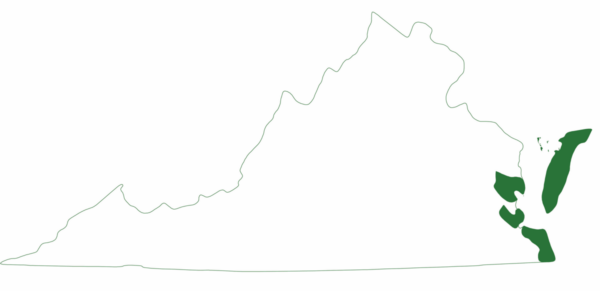Adult Leatherback sea turtle (c) Alastair Rae
Leatherback sea turtle hatchlings going into the ocean for the first time (c) U.S. Fish and Wildlife Service Southeast Region
Leatherback sea turtle. Photo by David Rabon for the U.S. fish and wildlife service
Fact File
Scientific Name: Dermochelys coriacea
Classification: Reptilia, Order Testudines, Family Dermochelyidae
Conservation Status:
- Federally Endangered in the U.S.
Life Span: 30 years
Identifying Characteristics
This is the largest marine turtle. The carapace length is as great as 244 cm (96 in.), with an average of 155 cm. It has a weight of 290-590 kg. The carapace is teardrop-shaped and covered with leathery skin, as opposed to horny plates. Hatchlings are black to dark brown, and the keels on the carapace and the margins of the flippers are white to yellow. Leatherbacks can probably exchange gases through their skin as indicated by sphincter muscles in the pulmonary arteries that can divert blood from the lungs to the skin. The oil found within both the skeleton and flesh of this species may lessen decompression problems during rapid diving and resurfacing. Leatherbacks can dive to a depth of 475 meters, nearly the depth attained by the bottle-nosed dolphin. The leatherback is able to maintain its body temperature several degrees higher than in surrounding waters. This explains its ability to migrate into cold waters in upper latitudes where it feeds on the abundant coldwater jellyfish. The preponderance of clear plastic debris in the oceans has had a negative impact on the survival of leatherbacks. These turtles consume plastic bags, jugs, and sheets because they look like jellyfish. This leads to intestinal blockage and starvation.
Diet
The diet of this species consists of soft-bodied animals such as jellyfish and tunicates, together with associated juvenile fishes, amphipods and other organisms. Although they are not agile enough to catch fish on their own, they will forage from gill and pound nets. In Virginia, leatherbacks feed primarily on the moon jellyfish and sea nettle.
Distribution:
Only subadults and adults are seen in coastal waters; juveniles are seldom seen anywhere. Leatherbacks are the most pelagic of sea turtles. They forage in coastal and offshore waters but occasionally wander close to shore and into estuaries. They occur in Virginia’s coastal waters during the warmer months and stay longer than other species. Breeding is not likely to occur in Virginia. This species prefers water deeper than 15 feet.

Did you know?
The leatherback is the largest living turtle species reaching sizes of up to 8.8 feet in length and 1,982 pounds in weight even larger then the Galapagos tortoise which only reaches 5ft in length and 500 pounds in weight
Hatchling facts!
The temperature of the nest at incubation determines the gender of hatchling sea turtles with colder temperatures producing male turtles and warmer ones females. These are one of the fastest growing turtles in the world reaching their adult size in 7-13 years from their minuet 35-50 gram size are birth.
Conservation
This is a species in rapid decline, at populations of nesting females in the Pacific ocean have dropped by 70-80% in the last decade. This has been caused by the global fishing industry as they often get tangled in nets and fishing line as well as their consumption of plastic debris which block their digestive system causing a slow and painful death. In attempt to save this species in 2004 the United states started enacting the Marine Turtle Conservation Act. But much work is still needed to prevent the extinction of this species.
Sources
Fontanes, F.; A. Roszko; S. Flore; K. Hatton; V. Combos and A. Helton 2007. “Dermochelys coriacea” (On-line), Animal Diversity Web. Accessed August 15, 2023 at https://animaldiversity.org/accounts/Dermochelys_coriacea/
U.S. Fish and Wildlife Service Southeast Region. Leatherback sea turtle Tinglar, USVI (5839996547). Flickr image commons
U.S. Fish and Wildlife Service Southeast Region. Leatherbacks crawling to the sea. Tinglares arrastrandose hasta el mar. Flickr image commons.
Updated 2023: Mara Snyder
Last updated: July 18, 2024
The Virginia Department of Wildlife Resources Species Profile Database serves as a repository of information for Virginia’s fish and wildlife species. The database is managed and curated by the Wildlife Information and Environmental Services (WIES) program. Species profile data, distribution information, and photography is generated by the Virginia Department of Wildlife Resources, State and Federal agencies, Collection Permittees, and other trusted partners. This product is not suitable for legal, engineering, or surveying use. The Virginia Department of Wildlife Resources does not accept responsibility for any missing data, inaccuracies, or other errors which may exist. In accordance with the terms of service for this product, you agree to this disclaimer.

